If you’re like most golfers chances are you want more shaft lean at impact. This is one of the few positions that all elite players have in common as it makes you compress the ball. Ultimately, it’s one of the keys to a better golf game.
But how do you get the shaft forward? Is it a lead wrist issue? Takeaway issue? Or something else?
Unfortunately, most golfers try to scoop the ball, sway, keep their weight back and hit up on the ball. Or, get overly steep and hit chunked, fat golf shots.
But the key to making better contact and increasing distance with every shot is forward shaft lean. Getting to this position at impact is what causes the “pure” sound of a golf shot and what everyone on the driving range is working toward.
Today, we’ll help you find this position a little more often by understanding how different parts of the swing can help get you there. Hopefully, we’ll eliminate fat and thin shots so you can hit the golf ball with power.
Shaft Lean at Impact
If you ever go to a PGA Tour (or LIV Golf) event I highly suggest you watch players up close at the driving range. The sound of irons is so pure you’ll never want to leave. They get the shaft leaning forward with ease and make playing golf look easy.
It’s the exact opposite of sounds that you tend to hear at a local driving range. Everyday golfers don’t use the club face and shaft correctly, which leads to a lot of inconsistent contact.
Professionals and elite amateurs compress the golf ball thanks to a downward strike at impact. This is known by some as “covering” the ball and leads to high quality shots where you hit the ball, then make a divot. The sound is pure and you can hear it from anywhere on the range.
But everyday golfers on the range are the exact opposite. They might hit a few shots pure with a mix of fat and thin shots due to inconsistent shaft lean.
The best ball strikers aren’t thinking about keeping their hands ahead of the ball though. It’s a natural strike due to their grip, setup, and weight transfer which we’ll cover today.
Key Takeaways
- Great iron players have a slight amount of shaft lean at impact position with a straight left arm.
- When you have forward shaft lean at impact you will compress the ball and reduce the loft which will increase distance.
- You want a slight amount of forward shaft lean with every club except your driver as you need to hit that club with an upward motion.
Keep reading to learn how to master this position and avoid some of the most common mistakes.
Defining “Shaft Lean” in Golf
First off, let’s define forward shaft lean…
Shaft lean is when the handle of the golf club is slightly ahead of the ball at impact position. This leads to covering the ball aka compression and a solid strike. You actually deloft the club slightly and hit it longer than ever.
There are some wrong ways to get into this position and some right ways as Milo Lines noted in this YouTube video. Before getting into the right ways to find this power position, let’s avoid some of the most common mistakes.
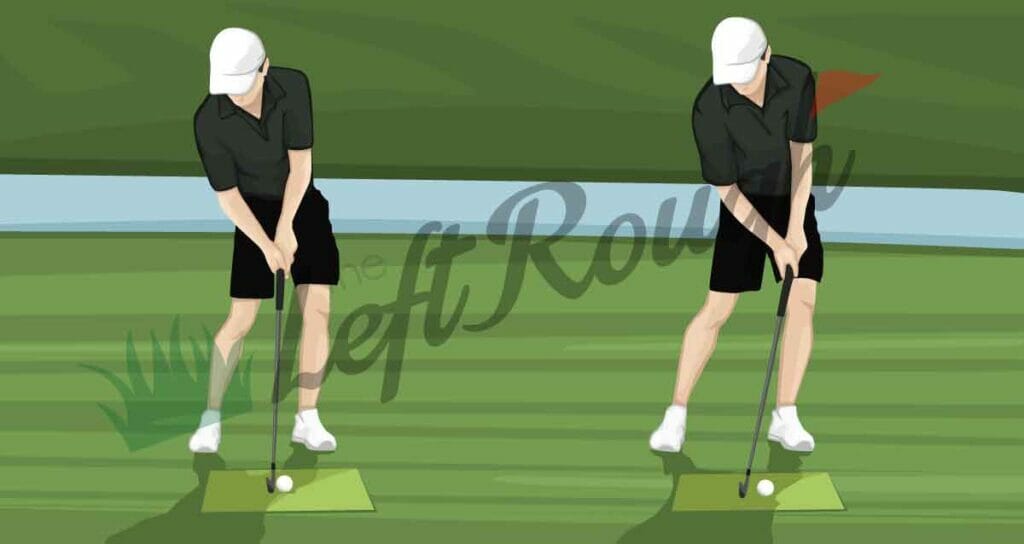
Mistake #1: Trying to Hold the Club
One of the biggest mistakes most amateur golfers make when trying to get forward shaft lean is trying to hold the angle. This is almost a punch like motion that makes it hard to face the square. Not to mention you’re going to lose out on tons of speed and distance.
You shouldn’t feel like your hands are way ahead of the club in your full swing. When you use the steps below it should begin to feel more natural and not forced.
Mistake #2: Incorrect Sequence
To become an expert ball striker you need the right sequence of motion in your full swing. Too many golfers move laterally (known as swaying) on their downswing instead of unwinding their hips as well. If your lower body moves too quickly laterally, it will cause you to get steep on the downswing.
As Milo mentioned in the YouTube video, “We’ve got to make sure that the pressure in our feet and the way our mass flows is always preceding the motion of the golf club. So there’s a little force to the left, then to the right, back to the left, always ahead of the golf club. And that allows us to be able to turning and stay ahead of the club into impact.”
Mistake #3: Too Much Lean at Address
As you’ll learn, you do want to have the butt-end of the club slightly ahead of the ball at address position. The key word here being slightly — too many golfers over do it and get their hands way ahead of the ball and actually makes it harder to get this position at impact.
Check Your Setup
Now that you can avoid some of the most common mistakes let’s get into what you need to do for proper shaft lean. The first thing to check is your setup – you need to build a solid base to build your pivot around.
Start by checking your stance which should be about shoulder width apart for most irons. Longer clubs need a slightly wider stance. But if you set up too narrow it makes it easy to sway laterally and kill the proper weight transfer in your swing.
Once your stance is in a good position you also want to get a slight amount of shaft lean. This forward press motion will make it easier for a better takeaway and ultimately better downswing.
Finally, don’t forget to ensure the ball position is correct for the club you’re hitting.
- Wedges and short irons = middle of stance
- Mid-irons = middle front of stance
- Long irons/woods = further up in stance
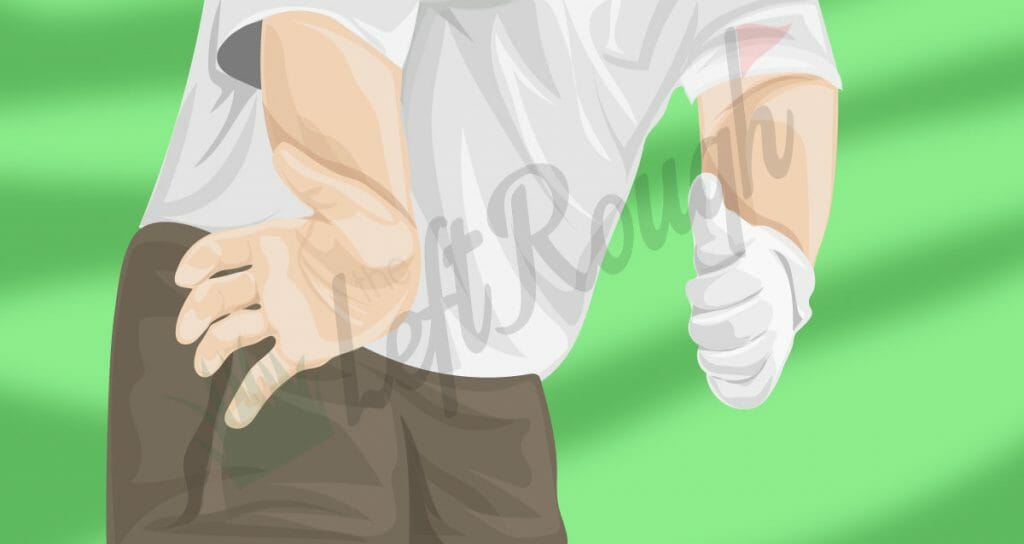
Understanding Wrist Position
Your wrists play a big role in ball striking – while the grip is important, don’t forget about your wrists too. Having a bowed wrist (vs. a cupped or flat wrist) will make it much easier to get into this position. A great example of this wrist position is Dustin Johnson or Jon Rahm.
Don’t forget about the wrist hinge too.
To hit irons and wedges purely you need the correct amount of wrist hinge to hit the ball, then the turf for a divot that is ahead of the ball. But it’s not always about hinging your wrist more as this can lead to issues.
As Hackmotion said, “Many amateurs try to achieve more shaft lean at impact by increasing their wrist hinge (increasing radial deviation). However, it often leads to open clubface and the need to make last-moment corrections. Instead, you should focus on developing your wrist extension/flexion pattern.”
This is why we’re such big fans of the Hackmotion wrist trainer. This trainer makes it easy to understand how to use your wrists properly to develop a more consistent golf swing. If you want to coach yourself and avoid getting lessons, this is one of the best training aids money can buy
Click here to read our full review of Hackmotion now.
Master Your Weight Transfer
Most everyday golfers sway instead of rotate around their body. But if you watch some of the best golfers in the world you’ll realize they have minimal lateral movement.
Instead, they turn around their body with a full shoulder turn and slight hip turn. This allows them to effectively use ground force and proper weight transfer to get the shaft back to the same position as address.
If you struggle with weight transfer you should look at a training aid like the Pressure Plate from Why Golf. This simple device (I like to call it an adult teeter totter) makes it easy to feel the proper weight transfer. Use this in practice or at home to feel the proper weight distribution throughout your swing.
Due to the design it makes sure you get at least 60% of your weight to your back foot on the backswing. Then you must get 70% of your weight to your lead side on the downswing which a lot of everyday golfers don’t. Using training aids like this and the drills below should help you find this power position more often than not.
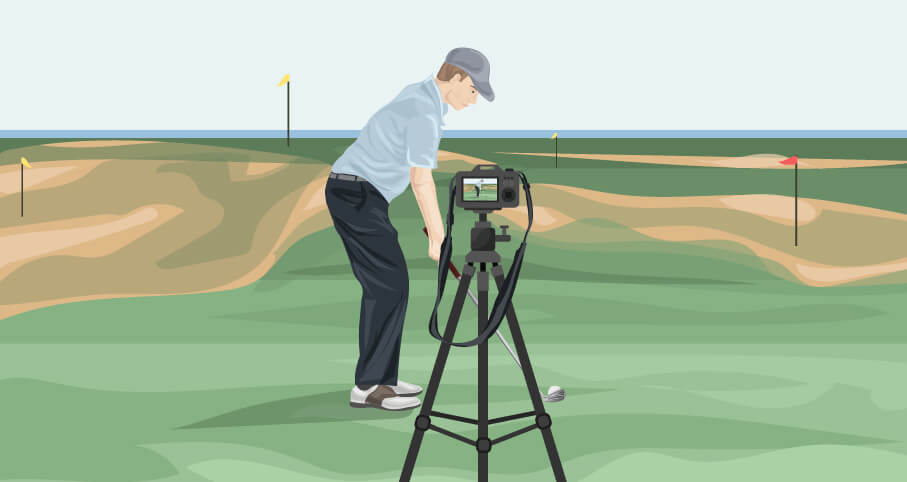
Record Your Swing
One of the best things you can do immediately to understand if you have a forward shaft lean is to record your golf swing from a face on angle. This makes it easy to pause the video at impact and see how the shaft is leaning. Or, if your hands are back and you’re scooping it from a cupped left wrist position.
Once you see if you have your hands forward at impact, you (or with help of a coach) can identify a plan to make the necessary adjustments.
Best Forward Shaft Lean Drills
There are tons of great drills to learn this position sooner than you think. Here are some of our favorites.
Clay Ballard’s “Magic” Drill
Check out this YouTube video from Top Speed Golf to learn mid-iron impact position drills. As he mentioned, pros tend to compress the ball more than amateurs and actually reduce loft by 30% (or more). Here’s how to get started:
- Start by grabbing a mid-iron and set up like normal.
- Instead of taking the club back, get into your ideal “pro position” with forward shaft lean.
- Your hands should be about 5–6 inches ahead with the club head trailing being the club shaft. This will ensure your divot is ahead of the golf ball.
- Keep your body position the same but push your hands forward but make sure to keep the club head square. Then rotate the hands and arms to get to parallel position.
- Make sure to keep plenty of knee bend so you can rotate your lower body. Then rotate your body with a 3/4 swing.
This drill is similar to the feeling of the PlaneMate by Tour Striker.
Use an Impact Bag
An impact bag is one of the easiest and most useful training aids ever. Using this device at home will help you find the sweet spot more often (and more distance) by getting your hands forward at impact.
Click here to learn five impact bag drills.
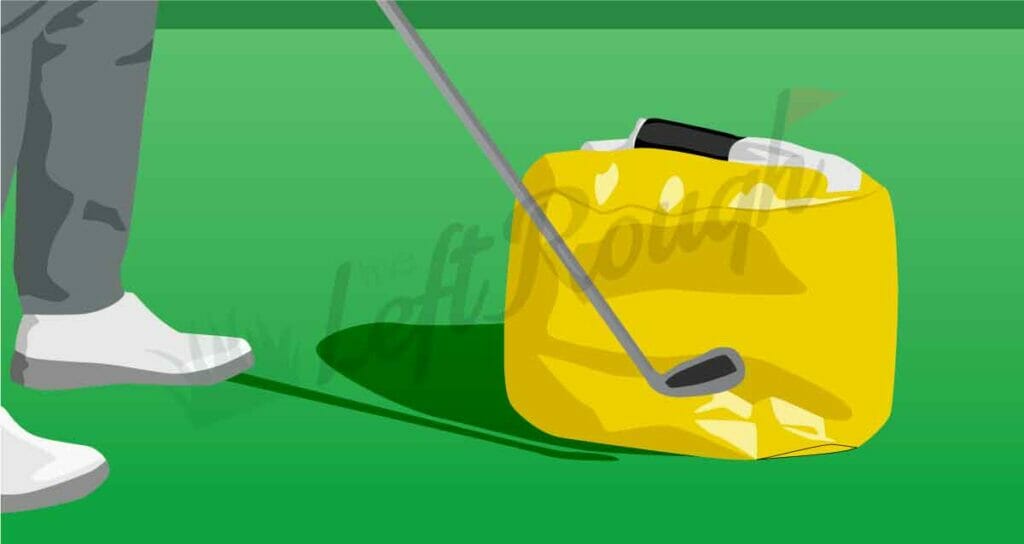
FAQs to Achieving Forward Shaft Lean
Do you have more questions about shaft lean in the golf swing? If so, keep reading to learn more now.
How much shaft lean should you have at impact?
You want your hands to be in front of your lead leg at impact so about 3–4 inches. If your hands are above the clubhead and more in front of your groin you likely don’t have enough shaft lean. You can over do it though so just remember that less is more when it comes to shaft lean.
What happens with too much shaft lean?
If you have too much too much shaft lean it can lead to a lot of low shots as you’re removing too much loft at impact.
What is the correct shaft lean?
You want to have your hand over your lead thigh at impact position. If they’re back toward the ball then you likely don’t have enough shaft lean.
As Clay Ballard of Top Speed Golf mentioned in the video above, pros can reduce the loft by up to 30% with a mid-iron. That’s an incredible amount of shaft lean!
Should you have shaft lean with driver?
No, you do not want forward shaft lean with your driver as you need to hit up, not down with this club.
This is the only club where you need to change your setup so that you’re swinging on an upward motion. In fact, you almost want your hands behind the ball since a driver has such little amount of loft.
This will help promote an upward strike and increase dynamic loft. Also, make sure to read this article about finding the right driver loft.
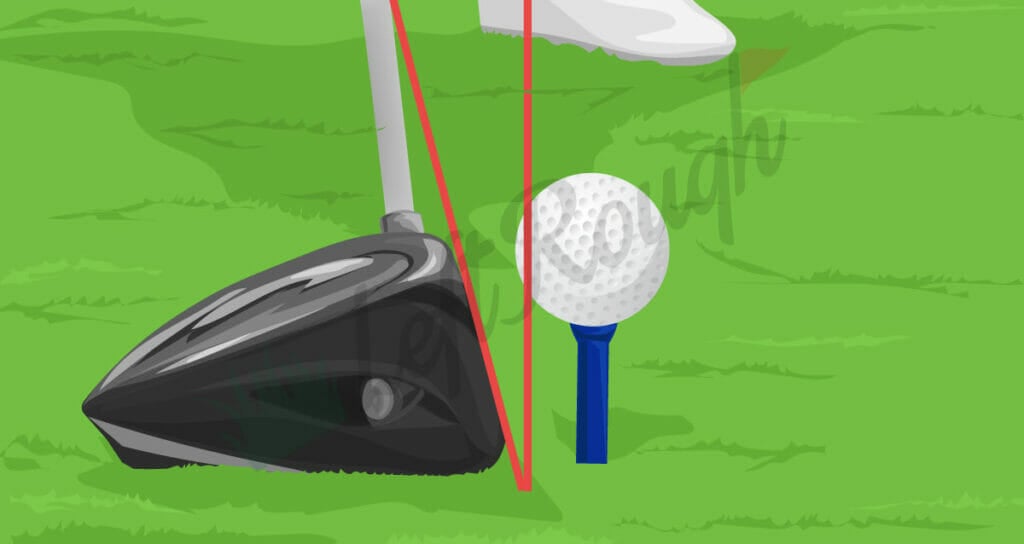
Does shaft lean increase loft?
No shaft lean decreases dynamic loft. So if your PW is 46 degrees a small amount of lean will get it closer to 43–44 degrees (or even less).
My Experience
I’ve suffered from a lot of thin shots over the years because I didn’t get enough forward shaft lean. But a few tweaks at setup, using a wrist trainer, and understanding weight transfer has helped my ball striking a ton.
The sooner you can figure out what’s holding you back from this position, the sooner you can start hitting it better than ever. Work with a golf instructor or the training aids mentioned above to hit better irons and hopefully, have more looks at birdie every round.
Final Thoughts
Forward shaft lean in front of the club head is the cornerstone of great ball striking. When you have a slight amount of club shaft lean at impact it will:
- Add compression.
- Improves accuracy.
- Increase ball speed.
- Lead to longer distances.
- Make it easier to compress the ball.
- Improve your strike and avoid common mishits.
Getting into this power position happens from a mix of setup, wrist hinge, and weight transfer. The best way to evaluate your strike with irons and fairway woods off the deck is to record your swing. Once you record from a face on angle it’s easy to see if you’re adding or removing loft and getting into a good impact position.
While shaft lean is important with irons and woods off the deck, you do not want forward shaft lean with a driver. This is one club you want to hit up on to launch it high and maximize distance.
Use the training aids and drills mentioned above to get into this position more often than not. For more, read our article on how to stop casting.

